Swag bags: The ultimate guide

Ryan Campion
March 11, 2020

It’s 2020, and if you’re a marketing director or HR professional looking to be competitive in your field, you best be bringing your swag A-game! Whether sent as surprise gifts, handed out at registration, or given out by sponsors to attendees, swag bags are industry standards and set the tone for attendees. Include a few surprise items, and your guests will be all the more thrilled.
We’ve crafted a swag bag guide to take your skills to the next level. We’ll cover what swag really is and why it matters. Then we’ll dive in to give you some great ideas and guidance on building your own ultimate swag bag. You’ll be set for a great campaign or event.
What is swag?
A swag bag is a collection of gifts given to clients, prospects, or associates. It could be a collection of items, or a single gift. It might come in an actual physical bag or it might not. Though it’s often custom-designed for a special event, some items, like mugs or notebooks, have become almost standard. Unlike a product, bundle, or special offer, swag is given to customers and prospects for free.
The term swag is borrowed from the slang thieves used for the loot bag in a heist. In business, they’re like physical nuggets of goodwill you give your prospects in order to get their attention, as well as customers, to thank them for their business. Since the items are free, they might feel a little like they’re getting away with something. That’s okay. In return for the gift you can expect their attention and the opening to make another sale.
How to create the ultimate swag bag
In order to put together a swag bag that packs a punch, you first need to think through your budget and goals, much as you would a product or a promotion.
1. Set your budget
Your budget may be linked to some larger program budget tied to a tradeshow or launch event. You’ll want to detail your budget from the bottom up to ensure you haven’t missed any items.
You might start, for example, with the topline budget number your management has allocated for show swag. You can then drill into the pieces themselves starting with an anchor piece like a logoed hoodie. Fabric, embroidery, and/or silk screening will all affect the cost, but those choices will force decisions about what’s important. When you reverse direction and consider the delivery of the piece to your prospects at the event, you can think through logistical details like kitting, shipping and storage.
Here’s a useful framework to work from when building your own budget:
- Have a topline budget for event swag (often a subset of total amounts planned for the event)
- Decide on the number of items and an anchor piece, such as a branded hoodie or a branded backpack (to carry event materials)
- Set requirements for branding and/or customizing the anchor piece(s) as this affects cost
- Think about quantities required and additionally, anticipate for contingencies
- Consider additional costs for logistics, keeping in mind details like:
- Kitting to pull pieces together
- Delivery to the venue
- Storage, if necessary, at the venue
- Other logistics specific to your items
2. Determine your goal
Have a clear goal in mind for your particular swag bag. If you don’t take the time to articulate that goal upfront, you may not hit larger company or program objectives.
One well-funded technology startup, for example, had a goal of flooding the show floor with prospects wearing their t-shirts. They defined flooding as five in ten showgoers wearing their shirt within the first four hours of the show. If that’s the goal, then it affects not only the budget for the shirt but also the incentive to get prospects to wear it.
3. Decide on the number of items
A swag bag might be a free promotion, but plan it as if it were a product. A bag of swag suggests multiple items, so they should be sized and itemized into what basically amounts to a bill of materials. How many pieces are there? Are some assembled kits of other items? These kinds of details will matter, even if you’re just sketching them out during the planning stages. As a physical item, your swag bag will need to be packaged, stored, handled, and potentially even shipped: other costs that will have to be rolled into your budget.
4. Pick a sweet bag or box
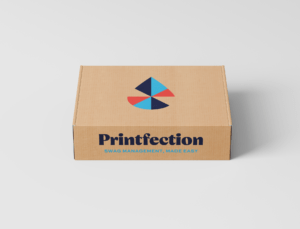
Anything you choose makes a statement, so choose carefully. This doesn’t mean that you necessarily need to pick the fanciest bag possible. Just choose it thoughtfully. It could be made of simple brown kraft paper, a nice choice for an eco-friendly collection of items. A collection of sample-size vials of expensive perfumes or beauty products might be delivered in a sequinned fabric bag. The key is that the bag hints at what to expect inside.
You can always opt for a small or medium-sized box as well. Designs can very from something basic with just your logo to full-color, custom artwork on the inside and outside.
When you’re planning for a conference or similar event, your bag can be especially useful too. Conferences often include handouts, samples, and other materials given to attendees. Design the bag to be useful and you’ll see attendees using it to carry everything they collect at the conference.
5. Choose memorable items
Giving away swag bags isn’t about being generous: there’s a business goal at play. And that goal can be as simple as drumming up goodwill, or as complex as launching a new product. Whatever the goals, you want your prospects to remember your generosity—and you. To do that, the items you choose should be memorable. They should also be presented with humor, timeliness, or fitness to a theme. When thoughtfully assembled, even the most modest items can be very memorable.
6. Choose a vendor
There are multiple avenues when it comes to sourcing your swag. You can select individual vendors, which means you’ll need to manage purchase, inventory, and assembly all in-house.
Alternatively, you can choose a single fulfillment company to buy, manage, and drop-ship the assembled bags. Your choice in approach can make a significant difference in both price and internal resource demands. Depending on your available internal resources and the nature of your event, a swag fulfillment company can save time and money.
Swag bag ideas that drive ROI
Many marketing programs assume that a portion of any investment is considered “wasted.” With swag, that wasted portion can be quite literally trashed. No one wants to see their brand in a dustbin.
To avoid that fate, experts have learned to focus on incorporating useful swag bag items, making it more likely that the items will be collected or passed along, even if they’re not used by the primary recipient. It’s the type of swag that drives word-of-mouth referrals, ultimately giving memorable swag bags a better overall ROI.
Any number of things can make swag memorable. It could be delivering the right thing at the right moment, such as baseball caps handed out before a golf excursion. It could also include special or hard-to-find items customized with timely slogans. Below are 10 such items!
10 incredible swag bag items
These ten epic swag bag ideas will help you think creatively about items that should ideally trigger a memorable connection to your event theme and company messaging. A great item becomes epic when you can tailor it to your program in just the right way. You might group pieces to fit with a theme. You can also customize pieces with slogans or phrases that help tell your story, in addition to your brand.
1. Eco-friendly swag
Eco-friendly swag is gentle on the environment. It might be made of sustainable materials or designed to keep other disposable items out of the waste stream. With coffee houses offering discounts for customers who bring their own mugs, the opportunity has opened for marketers to put their own name on reusable mugs.
In addition to mugs, gifts like bamboo straws, bottle brushes, and produce bags fall into newer categories that signal your company’s environmental awareness. Sustainability features like recycled glass, bamboo feet, and cork insulators also offer an added bonus.
2. Premium water bottles
A case of bottled water is a nice thing to have handy at a tradeshow or conference. Handing one to a prospect is a gesture, and a nice thing to do. It’s not, however, a gift with lasting impact.
If your show is at a high altitude like Denver or a dry climate like Arizona, including premium water bottles in a swag bag will make a lasting impression. Consider the insulated stainless steel water bottles toted by both influencers and athletes alike. While water bottles themselves aren’t all that novel a concept, a high-end version makes a statement and can also be put to good use.
3. Wireless chargers
Wireless chargers are a great example of tech swag. They’re new, inexpensive, and useful to anyone with a late-model iOS or Android device. Look for those that are Qi-compatible and use magnetic induction to recharge batteries. (Qi is an open, universal charging standard.)
Travelers these days carry a bag-full of gadgets to keep their devices functioning properly. Invariably, they’ve forgotten the one thing they need most. Even if they already have one, these wireless chargers are convenient to have in multiple locations at home and the office. Today, these are available in a range of colors and materials.
4. Dopp kits
A dopp kit, or toiletry bag, is the perfect complement to a roll-on suitcase for a traveler. The term “dopp kit” is uniquely American as it references the toiletry bag designed by Charles Doppelt in 1926 and widely used by the US military during WWII.
As gifts for a swag bag, they’re a fine choice, and very on-trend. They can be branded easily and conveniently fit into your prospect’s travel routine. A quality dopp kit is lined with some kind of water-proof material to protect clothing from shampoo and other liquids. Some are even made of thick transparent vinyl or other material so that they can be used to present liquids for inspection in security lines.
5. Bluetooth speakers
Like wireless chargers, bluetooth speakers are among the most sought-after tech swag these days. A new generation of small, yet powerful bluetooth speakers are now on the market.
With their small size, they’re a perfect companion for travelers who like to listen to podcasts or guided meditation in the privacy of their rooms. Some of these speakers are so small they would fit in a pocket. Be sure to select one that can be customized with your logo.
6. Notebooks and pens
Don’t overlook notebooks and pens. They may seem ordinary, but they’re immediately useful and especially convenient when combined with other attention grabbing pieces in a swag bag. There are unique, high-quality options out there for notebooks and pens, too, including eco-friendly options.
To make an impression, keep quality in mind. Avoid paper that bleeds, and don’t get too fancy with ink colors. Brand colors like bright orange or lime-green are great for highlighters, but avoid them in pens intended for writing.
7. Wow-factor swag
The ultimate swag bag stays with your attendees if you’ve included a few items that hit on the “wow-factor.” They don’t have to be particularly expensive, yet if they’re thoughtful and different they’ll be noticed. Is the conference set in the same city each year? Then an item like the Neighborwoods coaster set is a great choice. Your brand is on one side and the neighborhoods of one of over 30 major U.S. cities is on the other.
A wellness conference might include blue-light-blocking glasses. They’re said to relieve eye strain, improve sleep quality, and conserve macular health. While the medical benefits have not been validated by experts, your attendees might appreciate the opportunity to experiment.
Add your logo and tell a story about how you want them to sleep well or see their way to your product. Your swag bag tells a story. Including a few unexpected items makes the story compelling.
8. High-quality mugs
Generations of cheap, plastic swag have triggered a pushback for prospects who reject the waste of throw-away items. Including a high-quality mug for desk or travel is a great way for your brand to stand out and be remembered.
Modern, quality mugs include features like stackability or built-in coasters. Matte finishes and quality printing ensure that your brand looks good and is remembered well after the coffee is gone.
9. Wearable swag
Items like t-shirts, jackets, and hoodies are staples of swag, but they remain popular for a reason. The open space on the front and back creates a canvas for graphics that tell a story about your brand or event. Your location, season, and planned activities can also suggest surprise wearable items like flip-flops and cowboy hats. However, wearables can pose challenges with sizing and fit. Do your research to determine the wearables’ fit and style that’s most appropriate for your target audience.
10. Anything they’ll actually use
Once you home in on your theme, start thinking about what things your prospects will actually use while participating in your conference or event. Their hotel may take care of the linens and shampoos, but what about those unexpected needs for a fashion-centric event like sewing kits, Tide pens (to remove stains), and lint rollers?
A conference at a camp-like retreat might include useful items for hikes like a birding guide, compass, and field glasses. While you want to keep items focused on your theme and brand, always ensure they’re useful. Anything that isn’t will get thrown away.
Targeted swag bags
Assemble the items in your swag bag thoughtfully. Like a good host, make your attendees’ interests your number one priority. This intentionality will help you anticipate what they might need given the season and venue.
Swag for specific climates
When building swag bags for a conference or other event at a location your guests may have traveled to, consider items for your bag that will help them manage around the heat, cold, humidity, dryness, altitude, or sand. It could be wearables like hoodies, hats, and flip-flops. It could also be accessories like towels and scarves. What’s most important is that you think about the experience from the perspective of an unprepared traveler. What will they need, want, or use?
Kid swag
Attendees participating in conferences at destination locations like DisneyWorld or Maui might well have brought their family. If kids are hanging out during the conference, then include special gifts for the kids. If you go with kid-sized versions of your wearables like hats, onesies, or t-shirts, then consider special graphics that welcome the kids.
An engineering conference at a Disney resort might include tees for the kids with phrases like “Tomorrowland engineer,” for example. Don’t overlook building blocks, coloring books, crayons, and markers. Have fun with it. If the kids enjoy it, then the parents will too.
Pet swag
Conferences and events held at pet-friendly resorts or on pet-centered themes will attract attendees who have pets themselves. Whether the small dogs and other animals accompany the guest or not, you can be sure they’ll appreciate thoughtful swag for their furry friends.
Consider “wearables” for pets like leashes, collars, and sweaters. Small short-haired dogs like chihuahua mixes frequently wear sweaters in cold northern climates. Like wearables for adults and kids, you may want to include sizing constraints in registration forms if you’re the one hosting the event.
Start building your ultimate swag bag
Your ultimate swag bag starts coming together when you focus on your attendee. Put yourself in their shoes. If you were attending a conference during summer in Arizona, you’d breathe a sigh of relief if someone handed you a nice pair of branded sunglasses and some quality sunscreen. Exhibiting at a conference with a high percentage of parents? Think of your clientele and invest in kid-friendly merch, as well as a high-quality item for the influencers attending.
Ready to up your swag bag game and get professional insight from experts? Reach out to get a demo from Printfection today.
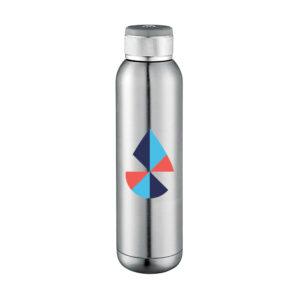
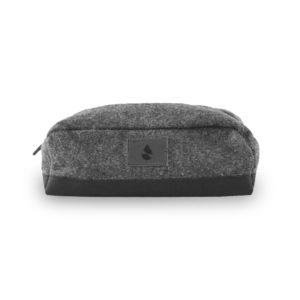
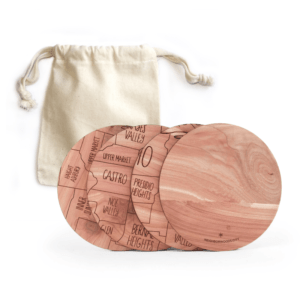

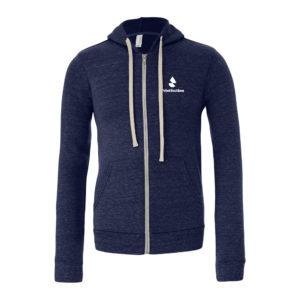

You have mentioned some great points Ryan! Another important thing is a call to action for engaging customers. For instance, along with the name and phone number, it can also say call for a free consultation.
Without a doubt! Great point, Jeremy ~